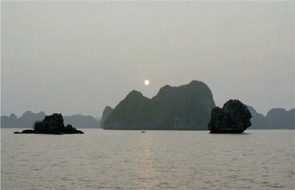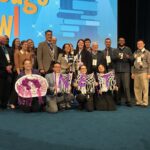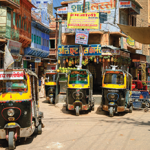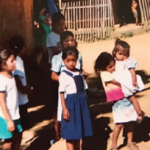Editor’s Note: Dr. Le was born in Vietnam and spent her childhood there, but she and her family left the country in the aftermath of the Vietnam War. They eventually settled in the United States, where Dr. Le attended college and medical school. Over 30 years later, she returned to Vietnam as a volunteer with the nonprofit organization Project Vietnam (PV), which provides medical care and training to the people of Vietnam. What follows are some of her reflections on her experiences there.

November 2004
My first trip to Vietnam was in November of 2004. I went along to observe, to dive into a culture that I thought I knew, yet was now so foreign to me. One hundred fifty volunteers departed from various cities in the United States, Canada, Australia, and France, converging in Ho-Chi-Minh City on the same day. There were physicians, nurses, respiratory therapists, emergency medical technicians (EMTs), engineers, and volunteers from all walks of life.
We were organized into three teams. The medical team went to three remote northern hospitals to deliver medical care to approximately 2,300 individuals, from children to elderly. The surgical team traveled to Lang-Son (a remote, rural town in northern Vietnam, close to the China border) and operated on 85 children with cleft lips and cleft palates. The training team was dispatched to the Saigon School of Medicine, the teaching hospital Cho-Ray, Khanh-Hoa (Nha-Trang) hospital, the pediatric hospitals in the South, then Bach Mai hospital in Hanoi, as well as the surgical hospital Viet-Duc, the national institute of Pediatrics in the North, and Thanh-Hoa general hospital. I was assigned to the training team. The first year, I had no duty; I just observed.
After the first day in Saigon, I met members of the training team returning to the hotel with long faces, mumbling unintelligible expressions of frustration. They spent a whole day at a teaching hospital walking around, twiddling their thumbs, waiting for an audience! Cell phone calls flew back and forth between the doctors and the leader of the training team. What happened? No one knew, except that the volunteers of Project Vietnam spoke perfect English, but had very little to no fluency in Vietnamese, and the Vietnamese counterparts spoke beautiful Vietnamese and little English.
Both sides had mutual admiration, yet met with invisible barriers—linguistic, historical, and psychological. A few phone calls from the leader of the training team, then the doctors went back to the teaching hospital the next day. The hospital officials recruited Vietnamese doctors and residents from different specialties interested in emergency medicine and trauma care to attend the conference. The sessions were designed on the fly, depending on needs and interests voiced by the audience. There was no provision for a medical translator. Amid the polite brouhaha, I stepped in to mediate and became the medical translator by default. My colloquial Vietnamese was fluent, but I have a meager understanding of the medical terminology in Vietnamese and did my best with the help of several Vietnamese doctors. I learned that the Vietnamese doctors are excellent, astute clinicians, with a tremendous amount of trauma experiences and management. The technical limitations they encounter on a daily basis and the thirst for access to updated world medical literature forced them to become creative, inquisitive, and industrious.


